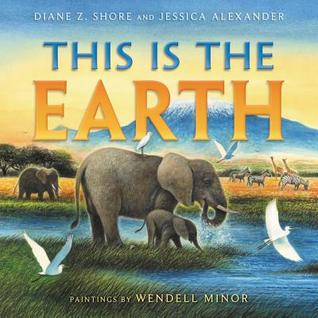Franki was lucky enough to snag an ARC of Out of the Wild (her review here); I bought mine at Cover to Cover.
 OUT OF THE WILD
OUT OF THE WILDby Sarah Beth Durst
June, 2008
review copy purchased at my favorite independent children's bookstore: Cover to Cover
I laughed out loud -- literally shouted a "HAH!" -- at the end of the first book, Into the Wild, when the identity of the "villain" (the one who caused The Wild to grow) is revealed. Durst hid her villain in plain sight.
In the second book, Out of the Wild, I started laughing out loud from the very beginning. Reading this book is like being on the magic carpet with Julie -- a roller coaster ride of twists and turns and near-misses and surprises. With lots of laughs all the way. The story begins when The Wild eats one of the Three Blind Mice and then, when Julie demands, "Give him back!" The Wild instead delivers her father, the 500 year-old prince of Rapunzel, Julie's mother. Chaos begins immediately, when Prince (Julie's father) takes off to rescue a princess and The Wild begins to grow with a vengeance. And the laughs come one right after another.
On creating an identity for her father, who has appeared out of nowhere: "Who knew that miracles came with paperwork problems?"
On the experience of flying cross-country on a bath mat turned magic carpet: "This, she thought, is like some bizarre dream. She shouldn't be flying past DC on a bath mat."
When Julie comes up with a plan, her impulsive, charge-in-and-save-the-world father says, "It is a good plan. You are your mother's daughter." This causes Julie to think, "Well, it wasn't a save-the-world sort of plan, and it had the potential to be mind-bogglingly humiliating, but it was (moderately) better than charging in, sword raised."
When Julie climbs the beanstalk out of the Grand Canyon: "She told herself that she shouldn't be surprised. After all, if Grandma's broomstick could fly in the real world, if Bobbi's wand could change people into pumpkins, and if the wishing well could grant wishes, then why shouldn't magic beans work too? And no matter where they were, magic beans always grew into beanstalks that reached the giant's castle in the clouds. But still, a castle over Arizona...wow."
Pondering how her new friend Henry is coping: "She thought about Henry, finding out for the first time that his father was a fairy-tale character one moment and then being carried away by a dragon the next. He was, she thought, having a much worse day than she was."
On the nature of evil: "Linda still looked like the [description withheld because it's a total spoiler] that Julie had grown up knowing. She had plain brown hair and an ordinary round face with chipmunk cheeks. She wore a preppy brown sweater set and charcoal gray pants. What kind of villain wore a sweater set?"
Great tri-review at 7-Imp (with Tadmack of Finding Wonderland fame).
Other reviews at
Becky's Book Reviews
Dare to Be Stupid (Tamora Pierce's blog)
And here's Sarah Beth Durst's blog, where she tells about her upcoming visit to the Northboro, Massachusets Library -- the real one where she grew up as a reader and "learned to love books" -- the one that is, along with the town, the setting of both of her books. How fun would that be?!?!











